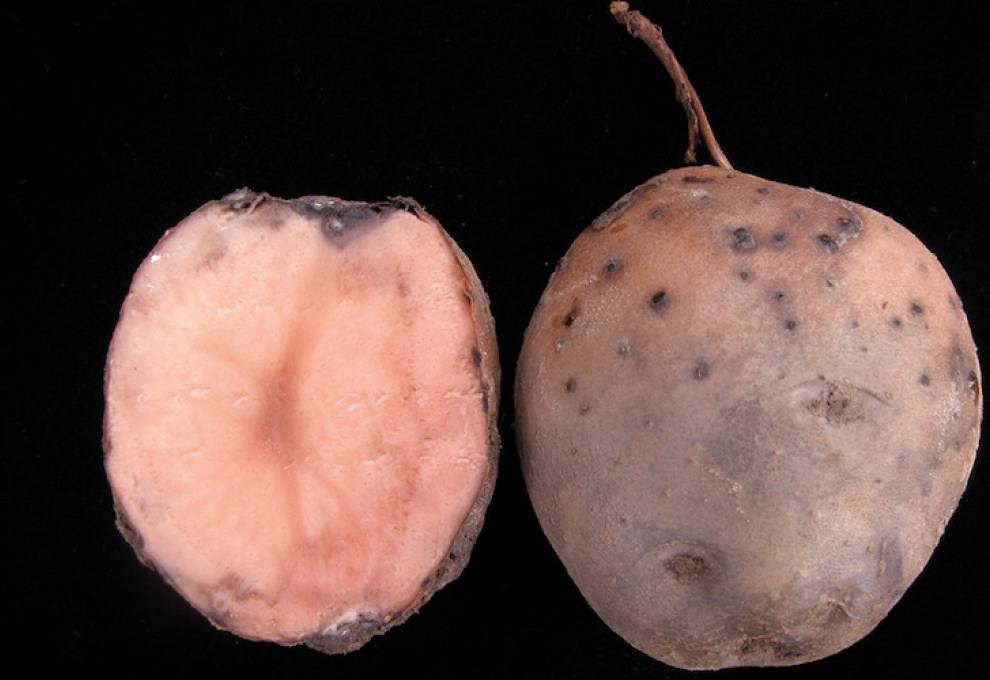
Pink rot showing the internal symptom (flesh turns pink when exposed to air) and the external symptom (Infected areas appear dark brown to purplish). Photos supplied by Eugenia Banks.
Syngenta Canada has released a new fungicide called Orondis Gold Potato for suppression of pink rot and Pythium leak in potatoes. The product contains two systemic fungicides – each with a different mode of action -- to suppress pink rot and Pythium leak.
Pink rot is a soil-borne disease that thrives in wet, poorly drained soils and can survive in soil for up to seven years. A few infected potatoes entering the storage bin can result in substantial losses, infecting healthy tubers and compromising marketable yield.
Syngenta says that Orondis Gold Potato is applied in‑furrow as part of a preventative disease control program. It combines metalaxyl‑M (Group 4) with oxathiapiprolin (Group 49) – a new mode of action to suppress pink rot and help manage the development of resistance. “Oxathiapiprolin is the only FRAC Group 49 fungicide on the market, and is a new mode of action against pink rot,” says Eric Phillips, fungicides and insecticides product lead with Syngenta Canada.
The company notes that Orondis Gold Potato is crop safe, so producers can protect their potatoes from pink rot without sacrificing yield or quality, or putting undue stress on foliage. It also suppresses Pythium leak, which enters tubers through wounds or bruises that occur during harvest and grading.
Orondis Gold Potato will be available for the 2019 growing season. To help manage resistance, Syngenta advises that growers making an Orondis Gold Potato in‑furrow application cannot make any subsequent Orondis Ultra foliar fungicide applications. See the product label for additional information.
Source: Syngenta Canada Inc. January 14, 2019 news release

Add new comment